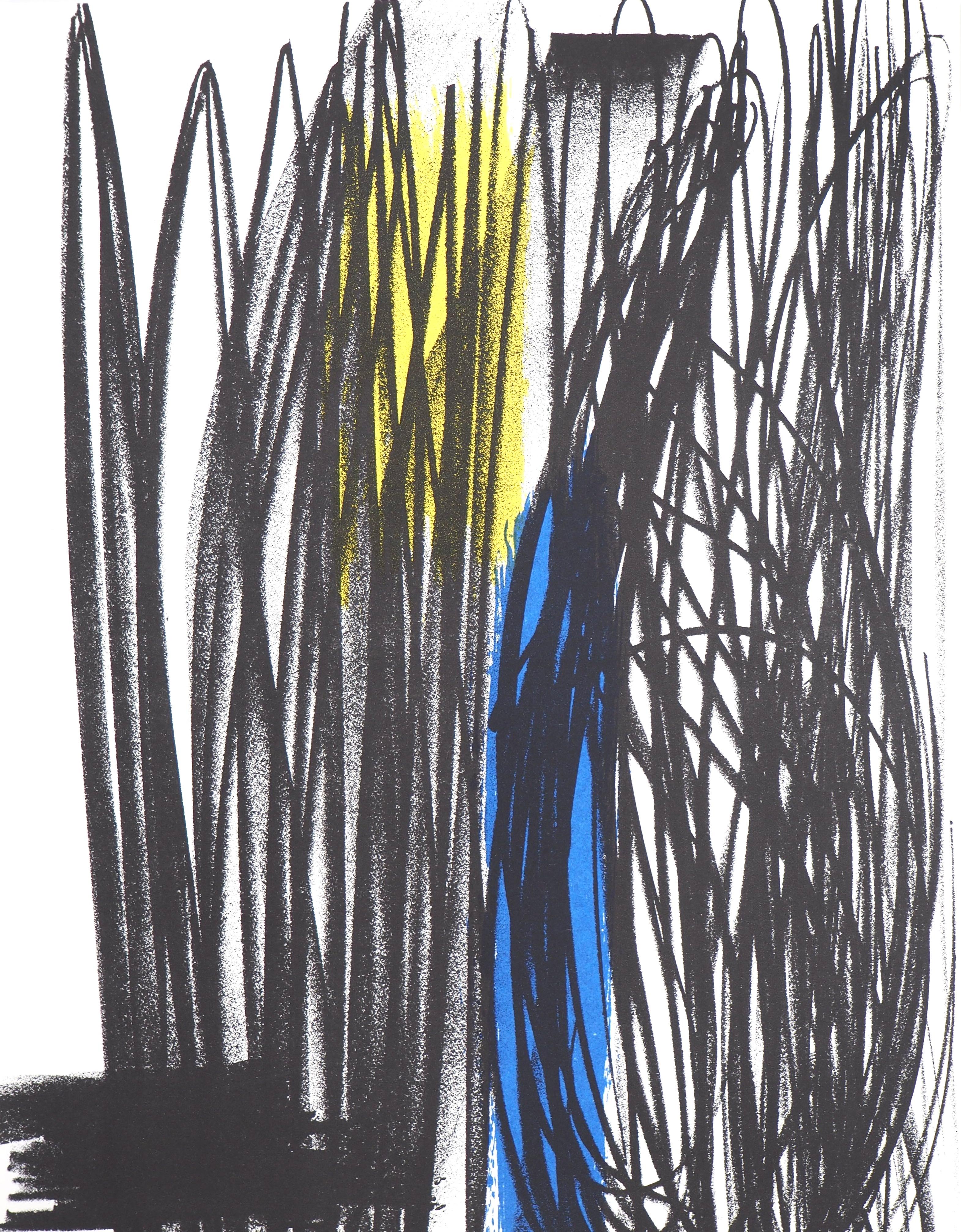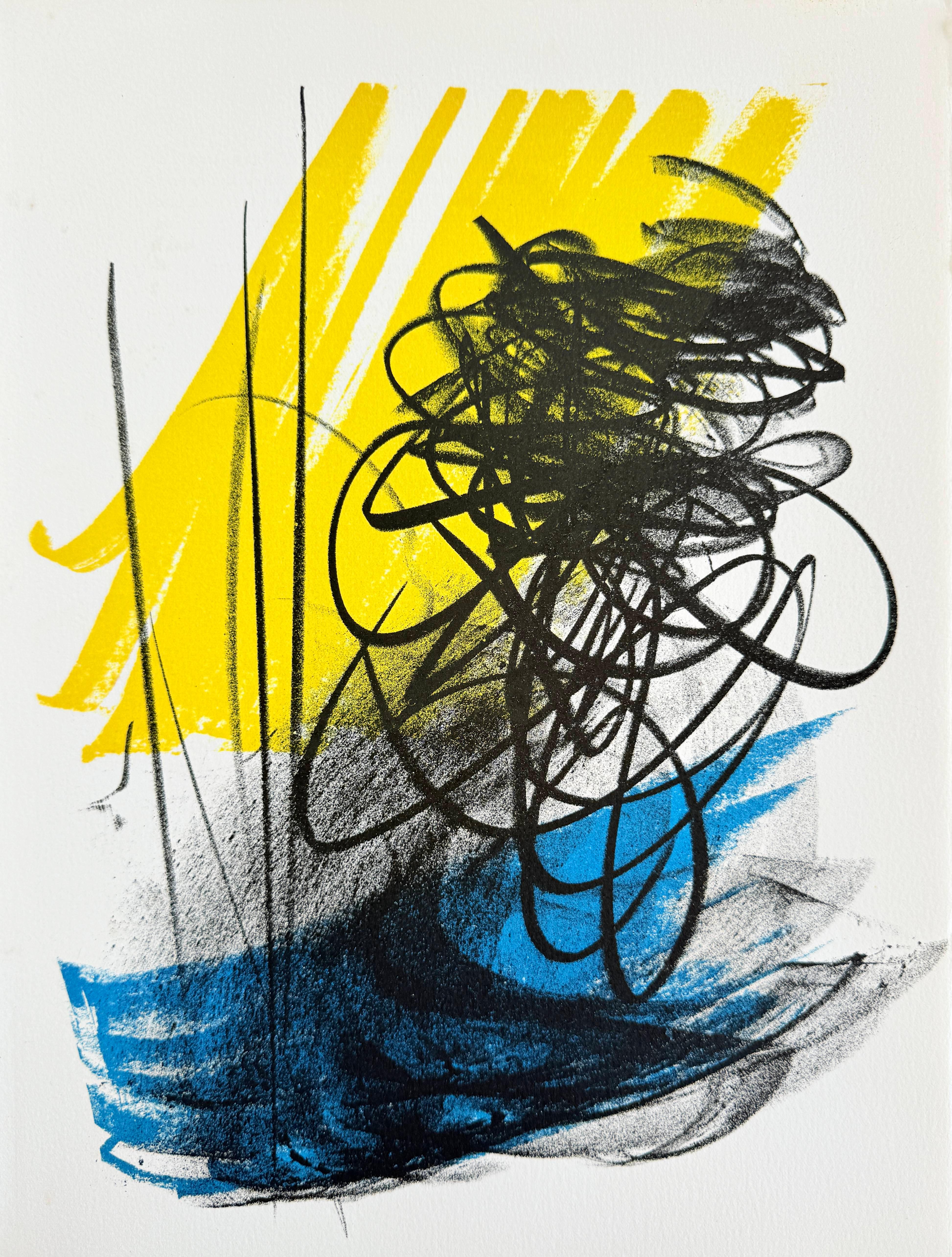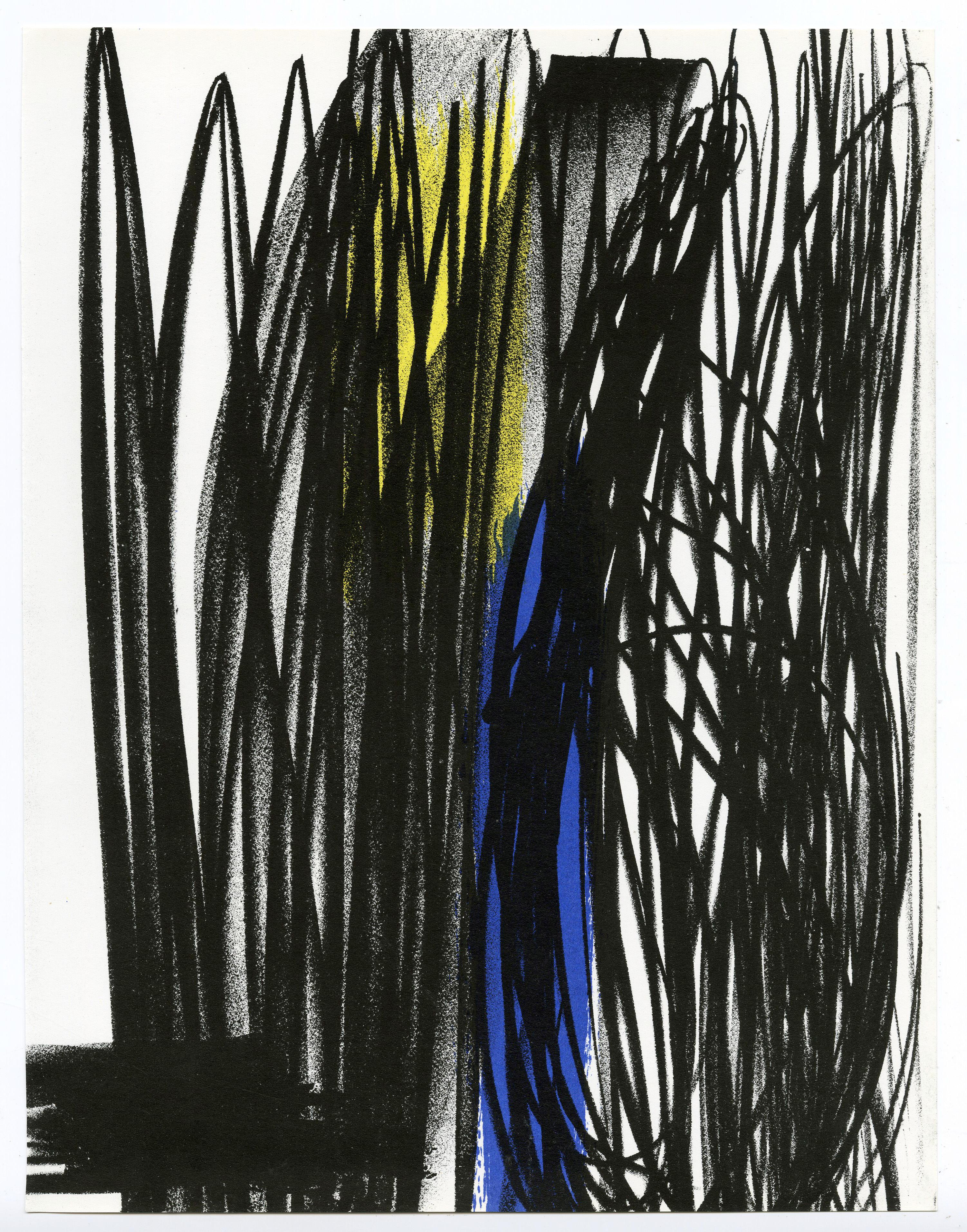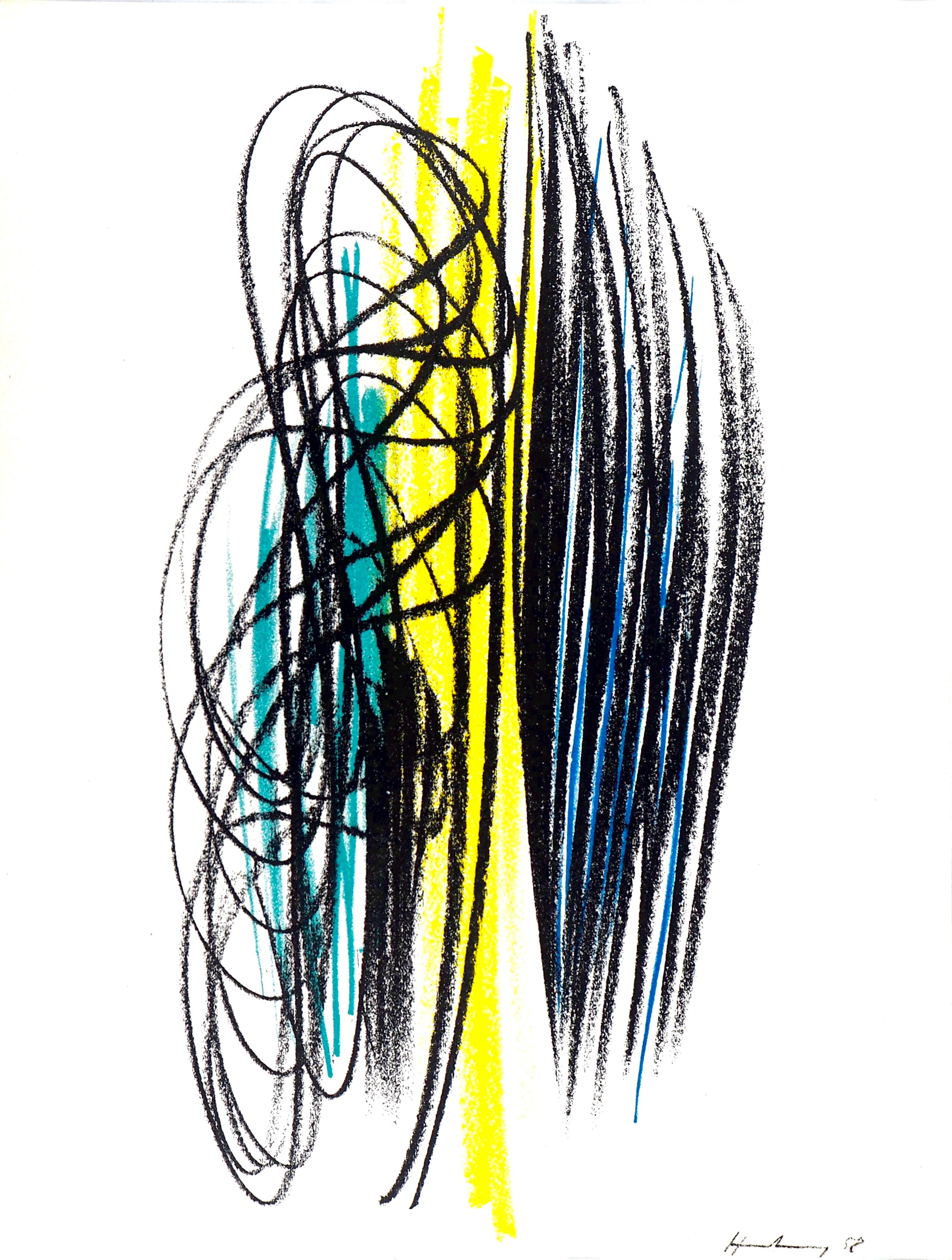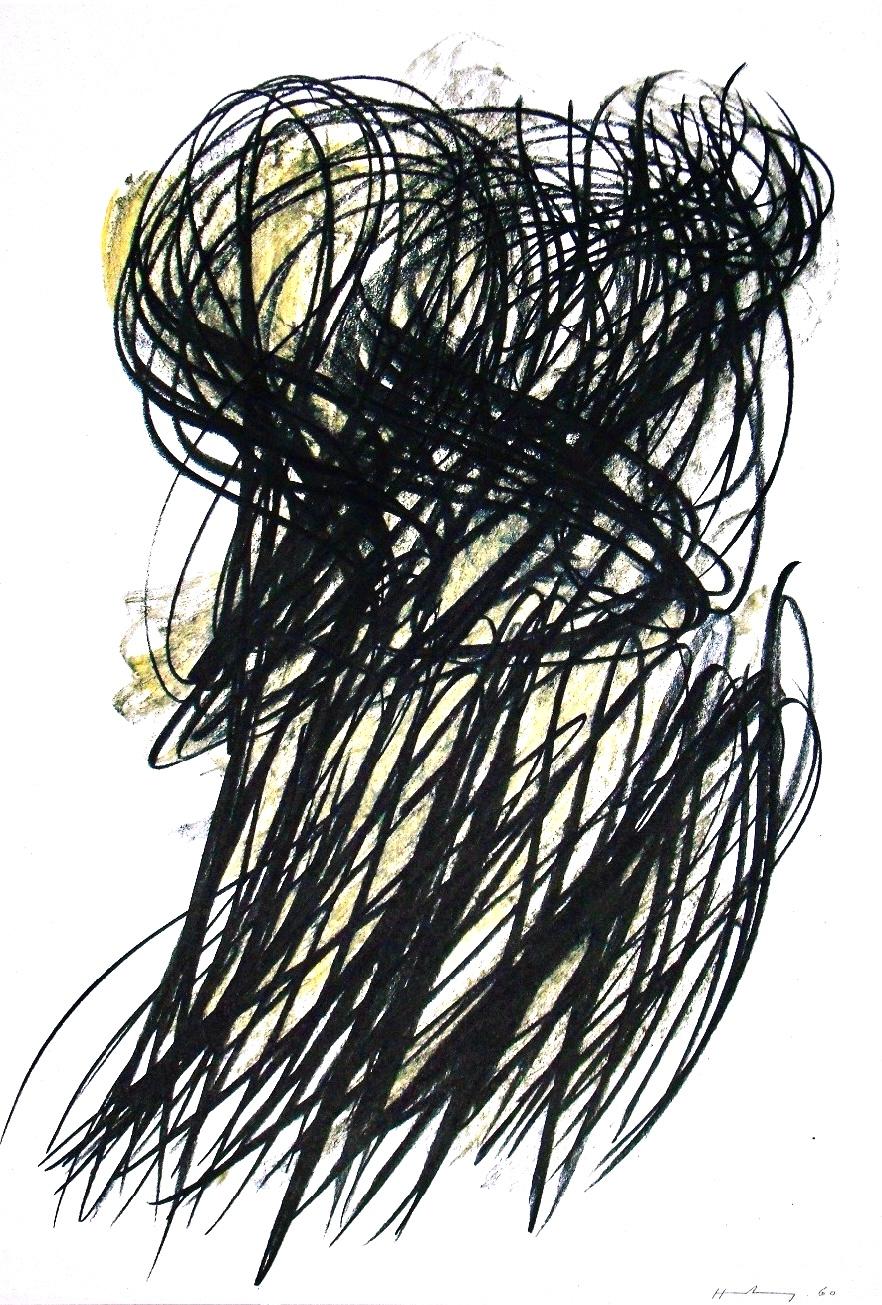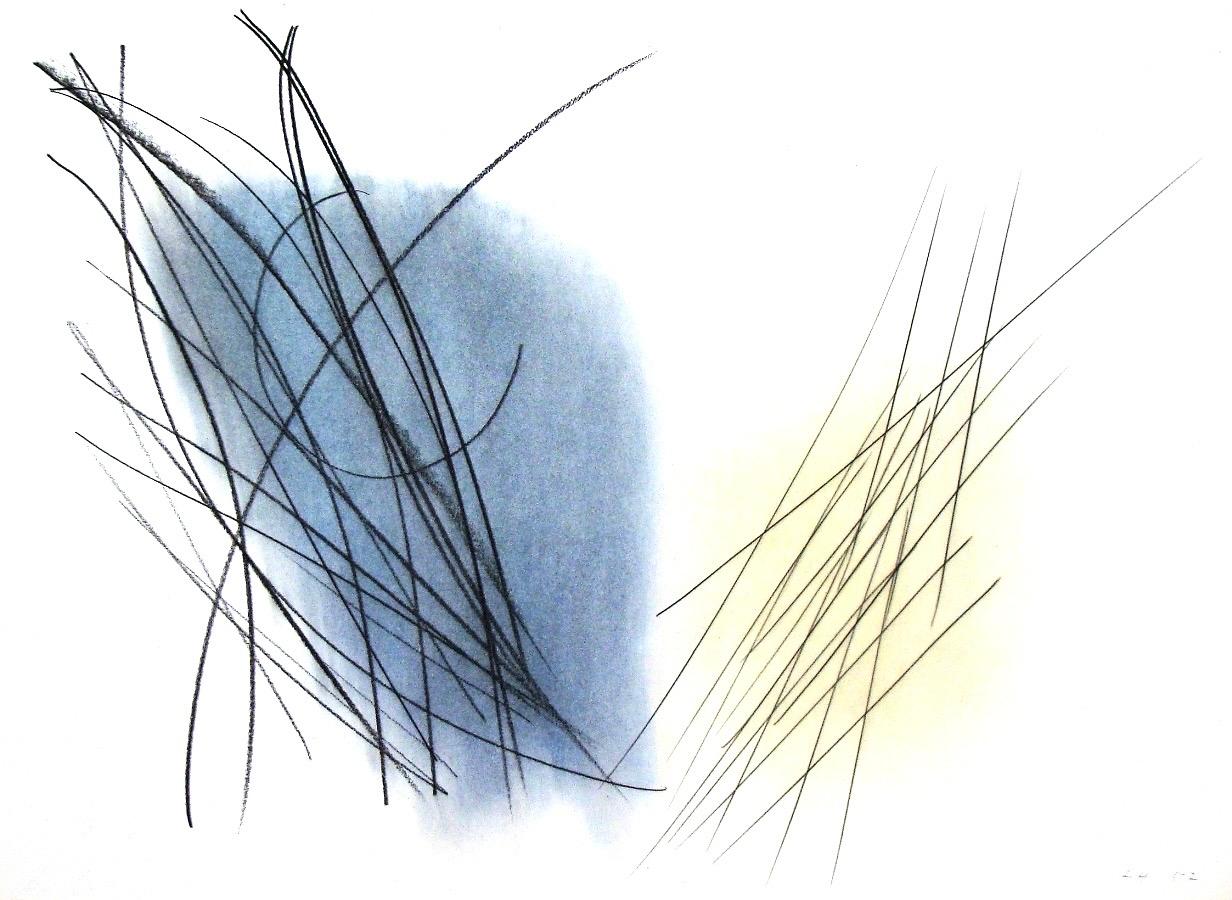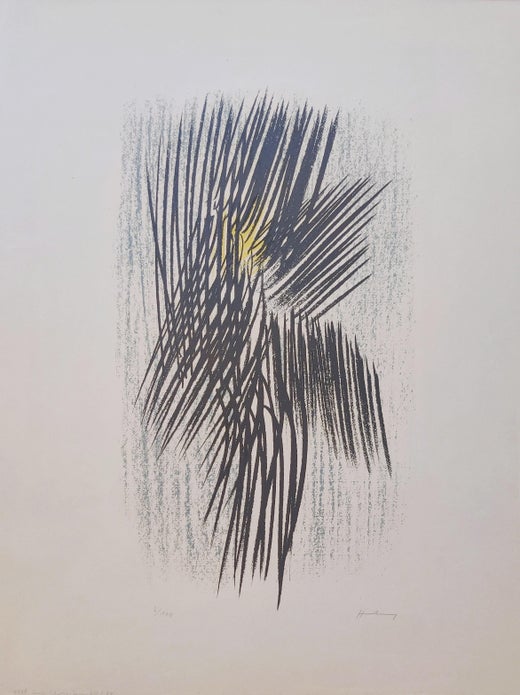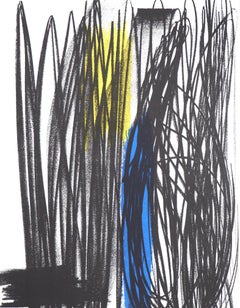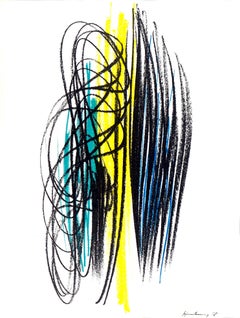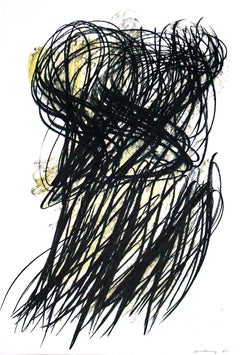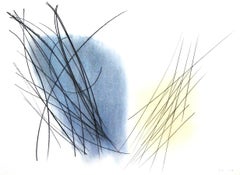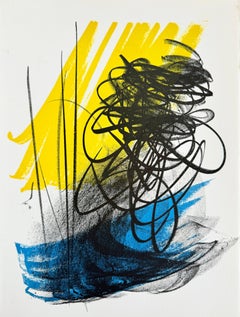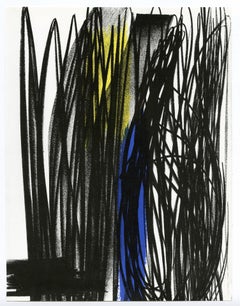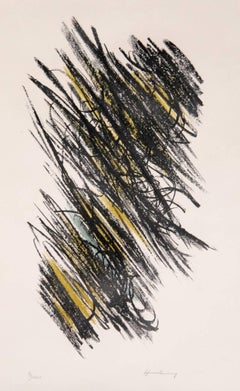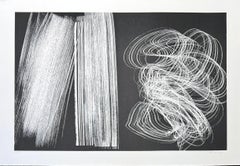This exquisite lithograph by Hans Hartung (1904–1989), titled L differe-2 (The Deferred-2), from the album San Lazzaro et ses Amis, Hommage au fondateur de la revue XXe siecle (San Lazzaro and His Friends, Tribute to the Founder of the Journal XXe Siecle), originates from the 1975 edition published by XXe siecle, Paris, and printed by Mourlot Freres, Paris, October 1975. This dynamic composition exemplifies Hartung’s gestural precision and emotional depth, capturing the immediacy of movement and the tension between spontaneity and control that define his work. Through sweeping marks and layered textures, L differe-2 conveys an atmosphere of energy and reflection, embodying Hartung’s lifelong pursuit of abstraction as a universal visual language.
Executed as a lithograph on velin d'Arches paper, this work measures 14 x 10.5 inches (35.56 x 26.67 cm). Unsigned and unnumbered as issued. The edition exemplifies the exceptional craftsmanship of the Mourlot Freres atelier, renowned for its collaborations with many of the leading modern artists of the twentieth century.
Artwork Details:
Artist: Hans Hartung (1904–1989)
Title: L differe-2 (The Deferred-2), from San Lazzaro et ses Amis, Hommage au fondateur de la revue XXe siecle, 1975
Medium: Lithograph on velin d'Arches paper
Dimensions: 14 x 10.5 inches (35.56 x 26.67 cm)
Inscription: Unsigned and unnumbered as issued
Date: 1975
Publisher: XXe siecle, Paris
Printer: Mourlot Freres, Paris
Condition: Well preserved, consistent with age and medium
Provenance: From the album San Lazzaro et ses Amis, Hommage au fondateur de la revue XXe siecle, published by XXe siecle, Paris, October 1975
Notes:
Excerpted from the folio (translated from French), Finished printing in Paris in October 1975. This album has been printed on velin d'Arches in DLXXV numbered examples. The LXXV original examples include a series of VIII original lithographs, signed and numbered by the artists. In addition, LV examples were printed for artists, authors, friends and collaborators of XXe siecle. The typography is from l'Imprimerie Union in Paris; the lithographs of Max Bill, Marc Chagall, Hans Hartung, Braque, Fontana, Magnelli, Picasso, Magritte and Poliakoff were printed by Fernand Mourlot in Paris; those of Alexander Calder and Joan Miro by l'imprimerie Arte in Paris; that of Max Ernst by Pierre Chave in Vence; that of Zao Wou-Ki by ateliers Bellin in Paris; and that of Henry Moore by the Curwen Studio in London.
About the Publication:
San Lazzaro et ses Amis, Hommage au fondateur de la revue XXe siecle (San Lazzaro and His Friends, Tribute to the Founder of the Journal XXe Siecle), published in 1975 by XXe siecle, Paris, is a landmark tribute to Gualtieri di San Lazzaro, the visionary editor and founder of the influential art journal XXe Siecle. For decades, San Lazzaro championed the great innovators of modern art—from Picasso, Miro, and Chagall to Calder, Hartung, and Zao Wou-Ki—through his publication, which became a platform for avant-garde creativity and intellectual exchange. This commemorative folio gathered original lithographs by many of the most significant artists of the twentieth century, each contributing a work that reflected their unique vision and their friendship with San Lazzaro. Printed by master ateliers including Mourlot, Arte, Bellin, and Maeght, the portfolio stands as both an artistic and historical testament to postwar modernism’s spirit of collaboration and invention.
About the Artist:
Hans Hartung (1904–1989) was a German-French painter and one of the great pioneers of postwar European abstraction, celebrated for his bold gestural mark-making, experimental techniques, and ability to translate pure energy and emotion into visual form. Born in Leipzig, Germany, Hartung studied philosophy, art history, and fine art in Leipzig, Dresden, and Munich, where he absorbed the groundbreaking ideas of Pablo Picasso, Wassily Kandinsky, and Joan Miro—artists whose innovations profoundly shaped his artistic philosophy. Influenced by Picasso’s daring structure, Kandinsky’s spiritual abstraction, and Miro’s lyrical biomorphism, Hartung sought to create an art that transcended representation and captured the rhythm of existence itself. In 1935, he moved to Paris and joined the avant-garde circle that included Alexander Calder, Alberto Giacometti, Salvador Dali, Marcel Duchamp, and Man Ray, whose explorations of form, movement, and perception encouraged him to experiment beyond the traditional boundaries of painting. His early works revealed a fascination with the expressive power of line—arcs, cross-hatching, and gestural brushwork that balanced chaos and control, tension and harmony. After losing a leg in World War II while fighting for the French Foreign Legion, Hartung transformed his personal pain into artistic liberation, creating works that embodied both destruction and renewal. Emerging as a leader of Art Informel in the 1940s and 1950s, he developed a radical process of painting using unconventional tools such as spray guns, knives, and branches to achieve luminous layers, textures, and explosive movement across his canvases. Each composition became a record of physical action and psychological intensity, a visual symphony that paralleled the spontaneity of Abstract Expressionism in America but with the lyrical precision of European modernism. His dynamic gestures—arcing lines, scratches, and splatters—conveyed both cosmic motion and meditative stillness, evoking the universal energies of nature, sound, and light. Like Duchamp and Man Ray, he viewed creation as experimentation; like Calder and Miro, he saw art as rhythm and freedom; and like Kandinsky, he understood abstraction as visual music. By the 1960s, Hartung had achieved international acclaim, winning the Grand Prix for painting at the Venice Biennale and exhibiting at Documenta, the Musee d’Art Moderne de la Ville de Paris, and major museums worldwide including MoMA, the Tate, the Guggenheim, and the Centre Pompidou. His influence extended to generations of artists such as Joan Mitchell, Pierre Soulages, Zao Wou-Ki, Anselm Kiefer, Gerhard Richter, and Sean Scully, who drew inspiration from his fusion of control and spontaneity. In his late career, Hartung continued to innovate with monumental airbrush works that radiated light and motion, confirming his lifelong belief that abstraction is a universal language of energy. Standing alongside Pablo Picasso, Alexander Calder, Alberto Giacometti, Salvador Dali, Joan Miro, Wassily Kandinsky, Marcel Duchamp, and Man Ray, Hans Hartung remains a cornerstone of modern abstraction—an artist whose fearless experimentation bridged chaos and beauty, intellect and instinct, and emotion and form. His highest auction record was achieved by T1962-R6 (1962), which sold for $4.4 million USD at Sotheby’s, Paris, on December 5, 2023, reaffirming Hans Hartung’s enduring legacy as one of the most visionary, expressive, and collectible abstract artists of the modern era.
Hans Hartung L differe-2, Hartung Mourlot Freres, Hartung XXe siecle, Hartung 1975 lithograph, Hartung velin d'Arches, Hartung collectible print, Hartung modernist lithograph.
